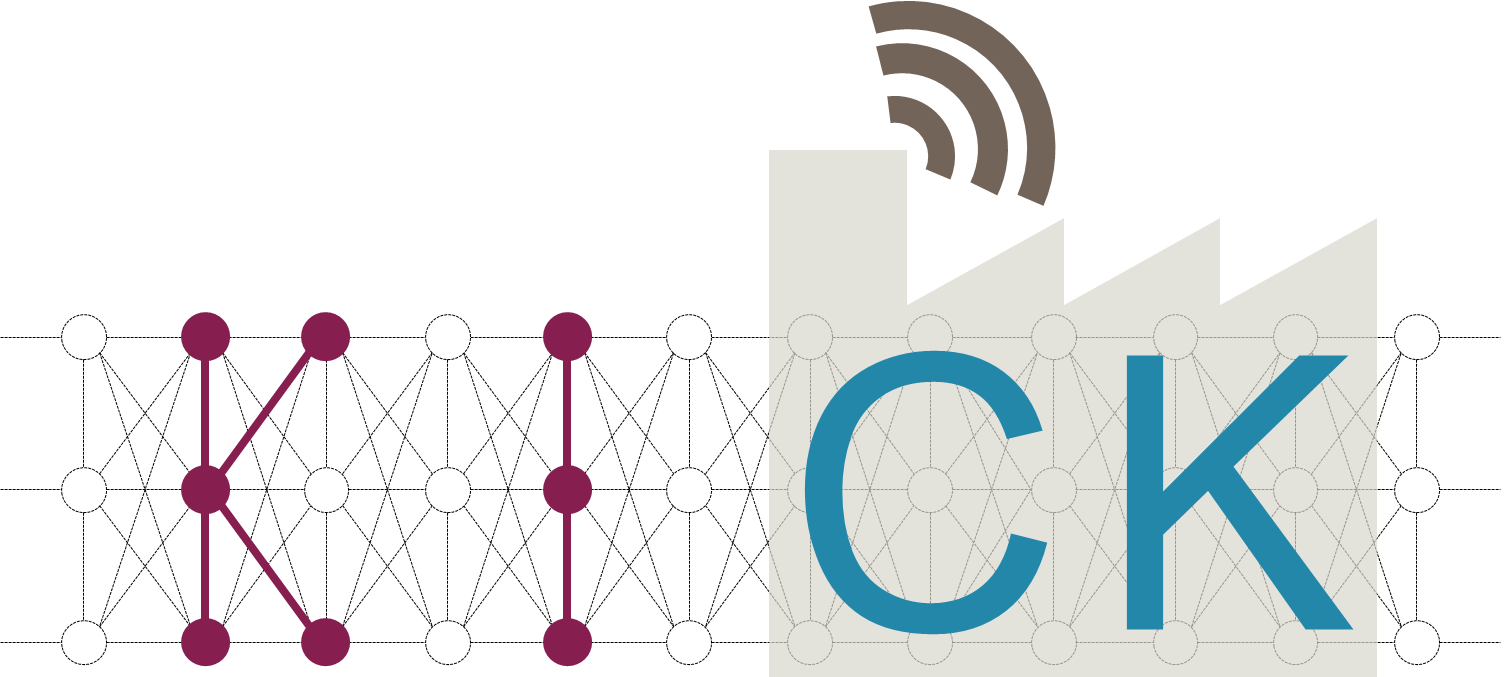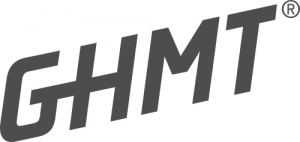

Menü

Die Abteilung Drahtlose Kommunikation und Netze (WN) des Fraunhofer HHI betreibt seit mehr als 20 Jahren Spitzenforschung zu drahtlosen Netzwerken. In enger Zusammenarbeit mit zahlreichen Unternehmen und Organisationen leisten die Forscherinnen und Forscher umfangreiche Beiträge zur Theorie, Konzeptentwicklung, technischen Machbarkeit und Standardisierung drahtloser Netze. Wissenschaftliche Studien, Simulationen und Evaluationen auf Link- und Systemebene, Feldmessungen sowie die Entwicklung und der Bau von Hardware-Prototypen runden das Angebot ab. Wir bieten unter anderem Lösungen in den Bereichen 5G und potenzielle Nachfolger, intelligente Antennensysteme (MIMO), kognitiver Funk, Millimeterwellenkommunikation, vermaschte Netzwerke mit drahtlosen Sensoren, Steuerung und Optimierung von drahtlosen Netzwerken, Car-to-Car-Kommunikation, selbstorganisierende Netzwerke, große Datenmengen sowie maschinelles Lernen und künstliche Intelligenz für drahtlose Netzwerke.
![]()
Nokia (Stuttgart und München) entwickelt die Technologien für unsere vernetzte Welt. Basierend auf Forschungsaktivitäten und Innovationen der Nokia Bell Labs, bieten wir Telekommunikationsanbietern, Behörden, großen Unternehmen und Konsumenten das umfangreichste Portfolio an Produkten, Dienstleistungen und Lizenzvergaben in der Branche. Von der Infrastruktur für 5G und das Internet der Dinge bis hin zu neuen Applikationen für virtuelle Realität und digitale Gesundheit, entwickeln wir die Technologien von morgen, die unser Kommunikationserlebnis nachhaltig verändern werden. Als führender Anbieter von Mobilfunk- und Festnetzinfrastruktur verfügt Nokia auch über die Software, Services und Zukunftstechnologien, um das ganze Wertschöpfungspotenzial vernetzter Geräte und Sensoren zu erschließen. Für Kunden in über 100 Ländern verbindet Nokia nahtlos Mobilfunk, Festnetz, IP-Routing und optische Netze mit Software und dem Netzwerkmanagement und bringt so die Transformation zu intelligenten und virtualisierten Netzen voran. Nokias Forscher und Entwickler erfinden kontinuierlich neue Technologien, die die Kommunikation zwischen Menschen und Dingen verändern: 5G, Ultra-Breitband, IP und Software Defined Networking, Cloud-basierte Anwendungen, Internet der Dinge und Netzwerksicherheit, Datenanalyse, Sensoren und Bildverarbeitung.
Nokia ist in KICK mit der Forschungsabteilung Bell Labs vertreten. Mit Standorten in mehreren Europäischen Ländern, den USA und China, und in Zusammenarbeit mit Kunden, Forschungsinstituten und Universitäten trägt Nokia Bell Labs mit umfassendem Verständnis des Netzwerkbetriebs zur Weiterentwicklung der Kommunikationsnetze bei, im Hinblick auf die Anforderungen des stetigen Verkehrswachstums und der zunehmenden Qualitätserwartungen der Nutzer (Quality of Experience), die Netzwerkeffizienz und Reduzierung des Energieverbrauchs. In KICK sind die Bell Labs Standorte München und Stuttgart vertreten, mit Schwerpunkt auf Ende-zu-Ende Netz- und Serviceautomatisierung, Netzmanagement, Mobile Edge Computing, Standardisierung und der Verknüpfung von Mobilfunk mit industriellen Netzen und Umgebungen.

Die Infosim® GmbH & Co. KG ist ein 2003 gegründetes, international tätiges IT-Unternehmen mit Hauptsitz in Würzburg, Deutschland und Niederlassungen in Münster, den Vereinigten Staaten (Austin, TX) und Singapur. Mit StableNet® ist Infosim® ein weltweit führender Anbieter von automatisierten Service-Fulfillment- und Service-Assurance-Lösungen für Telekommunikationsunternehmen, ISP, Managed Service Provider und Unternehmen. StableNet® wird mit einem einheitlichen Datenmodell auf einer standardisierten Systemplattform entwickelt und ist darauf ausgerichtet, die umfangreichen, betriebsbedingten und technischen Herausforderungen in verteilten und unternehmenskritischen IT-Infrastrukturen zu meistern. Die Kernkompetenzen von StableNet® liegen in der Überwachung und dem Management dieser Infrastrukturen in den Domänen Fault, Performance und Konfiguration. Darüber hinaus bietet Infosim® ERP Entwicklung in Microsoft® Dynamics 365 Business Central und individuelle Softwareentwicklung an und ist Partner in verschiedenen nationalen und internationalen Forschungsprojekten. Im Rahmen dieser Projekte forscht Infosim® an zukunftsweisenden Technologien wie dem Internet der Dinge, Künstlicher Intelligenz, Blockchain oder 5G. Im KICK-Projekt bringt Infosim® seine Erfahrung aus diesen Projekten ein, ergänzt durch breitgefächerte Kompetenzbereiche in verschiedenen Geschäftsfeldern, insbesondere im Netzwerk- und Servicemanagement mit einem speziellen Augenmerk auf herstellerunabhängigen Schnittstellen.
Siemens (Berlin und München) ist ein weltweit führendes Unternehmen im Bereich Automatisierung, Digitalisierung und Elektrifizierung. Dies umfasst die gesamte Palette von Netzwerktechnologien, Kommunikations-Middleware und Protokollen der Anwendungsschicht. Das Unternehmen ist in den Bereichen Industrie und Energie sowie im Gesundheitswesen tätig. Rund 385’000 Mitarbeitende entwickeln und fertigen Produkte, planen und erstellen Systeme und Anlagen und bieten massgeschneiderte Lösungen an. Seit über 170 Jahren steht Siemens für technische Leistungsfähigkeit, Innovation, Qualität, Zuverlässigkeit und Internationalität. Im Geschäftsjahr 2019, das am 30. September 2019 endete, erzielte Siemens einen Umsatz von 86,8 Milliarden Euro und einen Jahresüberschuss von 5,6 Milliarden Euro. Mit rund 3.000 Forschern und Entwicklern und mehr als 55.000 aktiven Patenten ist Siemens Corporate Technology (CT) eines der führenden globalen Forschungsnetzwerke innerhalb des Technologiekonzerns.

Die herstellerunabhängig und neutral agierende GHMT AG beschäftigt sich seit ihrer Gründung 1992 mit dem komplexen Gebiet der physikalischen Übertragungssicherheit in Netzwerken, Rechenzentren und Industrieanlagen. Ein hochqualifiziertes Team führt Prüfungen und sachverständige Inaugenscheinnahmen durch, erstellt Analysen, Gutachten und Konzepte in den Leistungsbereichen
So unterstützt die GHMT AG auch in renommierten Großprojekten Bauherren, Planer und Installateure durch ihre Konzepte, Qualitätssicherung und messtechnisch gestützte Abnahmen. Im Forschungsprojekt KICK ist die GHMT AG durch den Leistungsbereich Wireless Applications vertreten, welcher Dienstleistungen für den gesamten Lebenszyklus von industriellen Funknetzen anbietet und diese konsequent als ganzheitliches Konzept betrachtet. In der Einführungsphase berät sie Kunden bei der Auswahl einer für seine Applikation geeigneten Funktechnologie und führt eine präzise Simulations- und messtechnisch unterstützte Funknetzplanung von Campus-Netzen durch. Im Betrieb unterstützt sie ihre Kunden durch Remote-Support mit definierten Reaktionszeiten, Monitoring im Funkkanal, für das es eigene Messvorrichtungen entwickelte, sowie komplexe Störungssuchen. Hierdurch stellt die GHMT AG stets die bestmögliche Verfügbarkeit und höchste Performance für jegliche Arten industrieller Funkanwendungen sicher.

atesio aus Berlin, gegründet im Jahr 2000, ist ein gründergeführtes KMU. Es ist spezialisiert auf den Einsatz mathematischer Modelle und Methoden für die Planung und den Betrieb von Netzen, insbesondere von Telekommunikationsnetzen(2G, 3G, 4G, 5G, SDH, IP/MPLS, Glasfaser). atesio bietet Beratungsleistungen, Softwaremodule und–entwicklungsleistungen an. atesio ist als Spin-Off des außeruniversitären, mathematischen Forschungsinstituts Konrad-Zuse-Zentrum für Informationstechnik Berlin (ZIB) nach wie vor regelmäßig in nationalen und internationalen Forschungsvorhaben eingebunden.

Als ein führendes IoT-Unternehmen bietet Bosch innovative Lösungen für Smart Home, Smart City, vernetzte Mobilität und vernetzte Fertigung. Renningen bei Stuttgart ist das neue Zentrum der weltweiten Forschungsaktivitäten der Bosch-Gruppe. Hier entwickeln rund 1.600 Mitarbeiter neue Technologien, Werkstoffe und Verfahren für das zukünftige Geschäft von Bosch.

Das Deutsche Forschungszentrum für Künstliche Intelligenz GmbH (DFKI) mit den Standorten Kaiserslautern, Saarbrücken, Bremen (mit Außenstelle Osnabrück) und einem Projektbüro in Berlin ist auf dem Gebiet innovativer Softwaretechnologien die führende Forschungseinrichtung in Deutschland. In der internationalen Wissenschaftswelt zählt das DFKI zu den wichtigsten „Centers of Excellence“ und ist derzeit gemessen an Mitarbeiterzahl und Drittmittelvolumen das weltweit größte Forschungszentrum auf dem Gebiet der Künstlichen Intelligenz und deren Anwendungen. Das Finanzierungsvolumen lag 2014 bei 38,4 Millionen Euro. DFKI-Projekte adressieren das gesamte Spektrum von der anwendungsorientierten Grundlagenforschung bis zur markt- und kundenorientierten Entwicklung von Produktfunktionen. Aktuell forschen mehr als 430 Mitarbeiter aus ca. 60 Nationen an innovativen Software-Lösungen mit den inhaltlichen Schwerpunkten Wissensmanagement, Cyber-Physical Systems, Robotics Innovation Center, Innovative Retail Laboratory, Institut für Wirtschaftsinformatik, Eingebettete Intelligenz, Agenten und Simulierte Realität, Erweiterte Realität, Sprachtechnologie, Intelligente Benutzerschnittstellen, Innovative Fabriksysteme, Intelligente Netze. Der Erfolg: über 60 Professoren und Professorinnen aus den eigenen Reihen und mehr als 60 Spin-Off-Unternehmen mit ca. 1.700 hochqualifizierten Arbeitsplätzen.

Die Produktionstechnik weiter zu entwickeln und digital zu vernetzen, sie noch wirtschaftlicher, präziser und zukunftssicher zu machen – das ist unsere Aufgabe. Dabei wollen wir die Fertigung sowie deren vor- und nachgelagerte Prozesse effizienter gestalten. So bauen wir an der Industriewelt von morgen. Wir sind Markt- und Technologieführer bei Werkzeugmaschinen und Lasern für die industrielle Fertigung und wirken mit unseren Innovationen in nahezu jeder Branche. Unsere Softwarelösungen ebnen den Weg in die Smart Factory, in der Industrieelektronik ermöglichen wir Hochtechnologieprozesse.